Etiqueta "django"
Se han encontrado 9 Coincidencias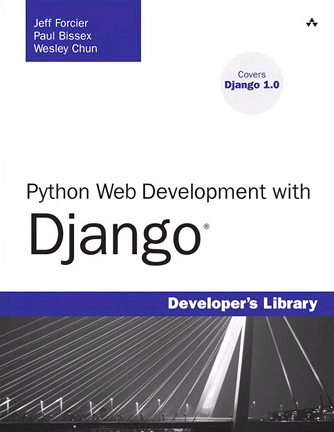
Python Web Development with Django
241 Visitas | 389 Descargas | 2013-09-23 14:42:20 | jgramos
Greetings,and welcome to Django! We’re glad to have you along on our journey.You will discover a powerful Web application framework that lets you do everything rapidly—from designing and developing the original application to updating its features and functionality without requiring major changes to the codebase.
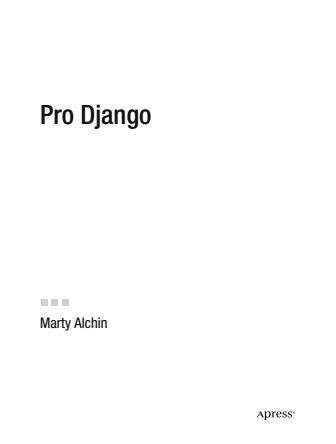
Pro Django
154 Visitas | 230 Descargas | 2013-09-23 14:44:36 | jgramos
Pro Djangorepresents two and a half years of accumulated knowledge in Python and Django, designed to educate readers who are already familiar with both topics and would like to take them further than they had previously done. You will learn a wide range of advanced techniques available in both Python and Django, along with tips on how to use them to achieve advanced functionality. This book is designed to be both a narrative to be read from start to finish and a general reference to be searched for specific information. Since you may not know what to look for or where to find it yet, feel free to read through the book first, then keep it handy for refreshing your memory as necessary.
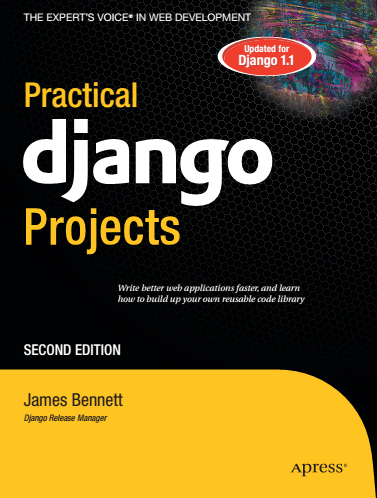
Practical Django Projects
169 Visitas | 279 Descargas | 2013-09-23 14:47:31 | jgramos
Web development is hard, and don’t let anybody tell you otherwise. Building a fully functional, dynamic web application with all the features that users want is a daunting task with a seemingly endless list of things you have to get just right. And before you can even start thinking about most of them, you must do a huge amount of up-front work: set up a database, create all the tables to store your data, plan out all the relationships and queries, come up with a solution for dynamically generating the HTML, figure out how to map specific URLs to different bits of code, and more. Just getting to the point where you can add features your users will see or care about is a vast and largely thankless job. But it doesn’t have to be that way. This book will teach you how to use Django, a “web framework” that will significantly ease the pain of embarking on new development projects. You’ll be able to follow along as you build real-world applications, and at every step you’ll see how Django is there to help you out. At the end, you’ll come to a wonderful realization—that web development is fun again.
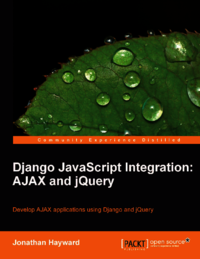
Django Javascript Integration: AJAX and JQuery
Web Programming
181 Visitas | 230 Descargas | 2014-04-28 13:37:13 | eancedeg
In this book, we will be exploring Django JavaScript integration and build an Ajax application using jQuery. We will build a Web 2.0 intranet employee directory, and we will aim for a solution that is Pythonic in more ways than one.
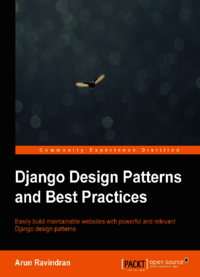
Django Design Patterns and Best Practices
Django Design Patterns and Best Practices
110 Visitas | 172 Descargas | 2016-02-15 15:31:36 | pecarrazana
Django is one of the most popular web frameworks in use today. It powers large websites, such as Pinterest, Instagram, Disqus, and NASA. With a few lines of code, you can rapidly build a functional and secure website that can scale to millions of users. This book attempts to share solutions to several common design problems faced by Django developers. Sometimes, there are several solutions but we often wonder whether there is a recommended approach. Experienced developers frequently use certain idioms while deliberately avoiding certain others. This book is a collection of such patterns and insights. It is organized into chapters each covering a key area of the framework, such as Models, or an aspect of web development, such as Debugging. The focus is on building clean, modular, and more maintainable code. Every attempt has been made to present up-to-date information and use the latest versions. Django 1.7 comes loaded with exciting new features, such as built-in schema migrations and app reloading. Python 3.4 is the bleeding edge of the language with several new modules, such as asyncio. Both, both of which have been used here. Superheroes are a constant theme throughout the book. Most of the code examples are about building SuperBook—a social network of superheroes. As a novel way to present the challenges of a web development project, an exciting fictional narrative has been woven into each chapter in the form of story boxes.
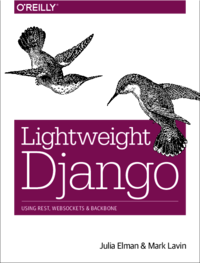
Lightweight Django
Lightweight Django
84 Visitas | 69 Descargas | 2016-02-15 15:36:08 | pecarrazana
Why This Book? We wanted to write this book primarily because we love Django. The community is amazing, and there are so many resources to learn about Django and to develop appli? cations using it. However, we also felt like many of these resources, including the official Django documentation, put too much emphasis on the power of Django and not on its decoupled design. Django is a well-written framework, with numerous utilities for building web applications included. What we want this book to highlight is how you can break apart and potentially replace these components to pick and choose what best suits the application you want to build. Similarly, we wanted to break down the typical structure of Django projects and applications. Our goal is to get you to stop asking “how do I do X in Django?” and instead ask “does Django provide anything to help me do X, and if not, is something available in the community?”
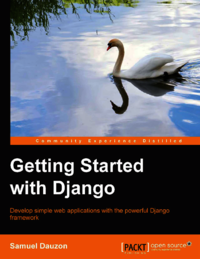
Getting Started with Django
Django programming
88 Visitas | 85 Descargas | 2016-02-15 15:38:35 | pecarrazana
For some years, web development has evolved through frameworks. Web development has become more efficient and has improved in quality. Django is a very sophisticated and popular framework. A framework is a set of tools designed to facilitate and standardize development. It allows the developer to benefit from very practical tools to minimize the development time. However, developing with frameworks requires knowledge about the framework and its proper usage. This book uses a step-by-step pedagogy to help novice developers learn how to easily deal with the Django framework. The examples in this book explain the development of a simple web tool: a text-based task manager.
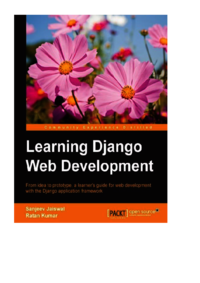
Learning Django Web Development
Django Web Development
114 Visitas | 145 Descargas | 2016-02-15 15:44:45 | pecarrazana
Django, written in Python, is a web application framework designed to build complex web applications quickly without any hassle. It loosely follows the MVC pattern and adheres to the Don't Repeat ourself principle, which makes a database- driven application efficient and highly scalable, and is by far the most popular and mature Python web framework. This book is a manual that will help you build a simple yet an effective Django web application. It starts by introducing Django to you and teaches you how to set it up and code simple programs. You will then learn to build your first Twitter-like application. Later on, you will be introduced to hashtags, Ajax (to enhance the user interface), and tweets. You will then move on to create an administration interface, learn database connectivity, and use third-party libraries. Then, you will learn to debug and deploy Django projects and will also get a glimpse of Django with AngularJS and Elasticsearch. By the end of this book, you will be able to leverage the Django framework to develop a fully functional web application with minimal effort.
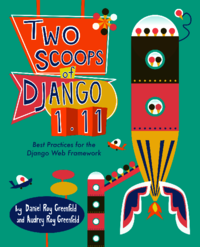
Two Scoops of Django
Django
105 Visitas | 60 Descargas | 2019-02-01 16:18:18 | josedaniel
Our aim in writing this book is to write down all of the unwritten tips, tricks, and common practices that we’ve learned over the years while working with Django. While writing, we’ve thought of ourselves as scribes, taking the various things that people assume are common knowledge and recording them with simple examples. Like the official Django documentation, this book covers how to do things in Django, illustrating various scenarios with code examples. Unlike the Django documentation, this book recommends particular coding styles, patterns, and library choices. While core Django developers may agree with some or many of these choices, keep in mind that many of our recommendations are just that: personal recommendations formed after years of working with Django.
Contribuir
Usted puede contribuir con Libros UCLV, es importante para nosotros su aporte..
Contribuir